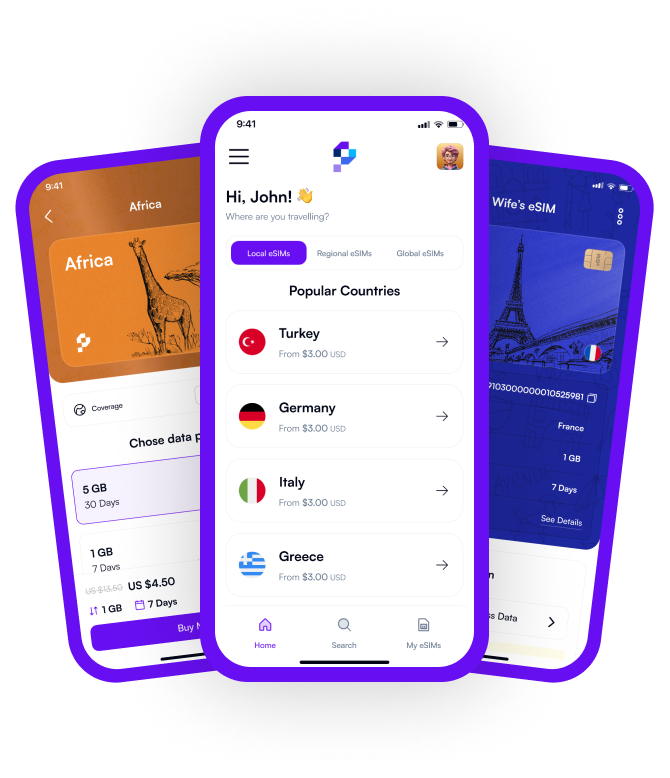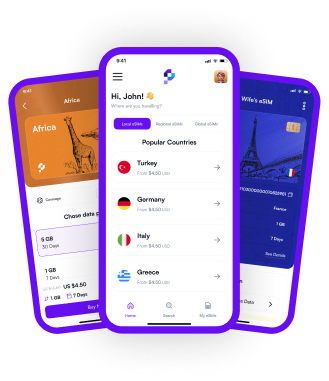Data roaming refers to the ability of a mobile device to connect to the internet and use data services while outside the geographical coverage area of its home network, typically when traveling internationally. When data roaming is enabled, the device automatically connects to a foreign network provider that has a roaming agreement with the user's home carrier, allowing continuous access to email, social media, navigation, and other online services. However, using data roaming can often incur additional charges, as the foreign network usage is billed at a higher rate. To avoid unexpected costs, many users opt to purchase international data plans or local SIM cards, or take advantage of eSIM technology for more affordable local network access. Understanding data roaming is crucial for travelers who rely on their mobile devices to stay connected abroad while managing expenses.
Do I Get Charged for Data Roaming?
Yes, you typically get charged for data roaming when using mobile data services outside your home network's coverage area, particularly when traveling internationally. These charges occur because your device connects to a foreign network provider, which has a roaming agreement with your home carrier, often at a premium rate. The cost of data roaming can vary significantly depending on your carrier's policies, the country you are visiting, and the specific data roaming agreements in place. To manage these expenses, many travelers choose to disable data roaming on their devices or opt for international data plans that offer more affordable rates. Alternatively, using an eSIM to switch to local network providers can also help mitigate high data roaming charges, providing a cost-effective solution for staying connected abroad.
Is it Good to Allow Data Roaming?
Allowing data roaming can be highly beneficial, especially for travelers who need to maintain connectivity while abroad. Enabling data roaming ensures that your mobile device can access the internet, use apps, and receive emails regardless of your location, thereby enhancing convenience and productivity. This capability is particularly valuable for business travelers who require continuous access to communication tools and online resources. Moreover, the seamless connectivity provided by data roaming allows for real-time navigation, local information access, and social media updates, enriching the travel experience by keeping you connected to both local and global networks.
However, there are potential drawbacks to consider before enabling data roaming. One of the primary concerns is the cost, as data roaming can incur significantly higher charges than standard domestic data usage, leading to unexpectedly high bills. To mitigate this, users should explore options such as international data plans, which offer more affordable rates, or utilizing an eSIM to switch to local network providers. Additionally, excessive reliance on data roaming can lead to increased data consumption, which might drain your battery faster. Balancing the need for connectivity with cost management and battery life considerations is essential for making the most of data roaming services.
What is the Use Of Data Roaming?
The primary use of data roaming is to ensure uninterrupted internet access and data services on a mobile device while traveling outside of its home network's coverage area. By enabling data roaming, users can stay connected to the internet, access emails, browse websites, use navigation apps, and engage in social media platforms even when abroad. This capability is essential for maintaining productivity, staying informed with real-time updates, and communicating effectively across borders. Data roaming facilitates seamless connectivity by allowing devices to automatically connect to available foreign networks through established roaming agreements, ensuring that users can leverage the full functionality of their mobile devices wherever they travel. However, users should be mindful of potential costs associated with data roaming and consider alternative connectivity options like local SIM cards or eSIM technology to manage expenses efficiently.
What are the Disadvantages of Data Roaming?
The disadvantages of data roaming primarily revolve around potential costs and data consumption issues. When using data roaming, users often face significantly higher charges compared to domestic data usage, as foreign networks typically apply premium rates. This can lead to unexpected expenses and high mobile bills if not monitored closely. Moreover, excessive use of data roaming can rapidly deplete device battery life due to increased data transfer and network searching activities. Privacy and security concerns may also arise, as connecting to unfamiliar networks could expose users to potential risks of data interception or cyberattacks. To mitigate these drawbacks, travelers are advised to explore alternative connectivity options such as local SIM cards or eSIM technology, which offer more cost-effective and secure ways to stay connected while abroad.

